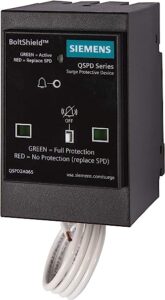All these years the lights have been working perfectly fine in your home and then all the sudden it starts flickering for seemingly no reason at all. Why did my lights start flickering? What happened to make them do that? And how do I fix it?
Diagnosing flickering lights is a common call we get so here’s a quick little guide on common issues with lights and what causes them to flicker.
Check these things to diagnose flickering lights:
Dimmer
Dimmers can be finicky little devices. The difference between a cheap dimmer and an expensive dimmer is quite a bit and cheap dimmers fail more often than you would think. Dimers seem to degrade over time, especially cheaper ones so if you have a dimmer connected to your lights it’s possible this is what’s causing the flickering. Some dimmers are not compatible with certain types of lights or light bulbs. Determining what dimmer you have and if it’s compatible with your lights is a great starting point to diagnose your flickering lights.
Wiring connections
Looking into the wiring connections is the most difficult way to diagnose your flickering lights. Because of the way homes are wired there are many locations where a bad connection could be causing flickering lights. Most wires in a home don’t go from point A to point B so determining how the circuit was wired and checking all those boxes along the way can be quite labor-intensive.
A faulty wiring connection can be where the wires are spliced together in their electrical boxes, it can also be where the wires are connected to the light fixture or switch.
To diagnose this properly all of the electrical switches, cover plates, and light fixtures, maybe even electrical outlets that connected to that circuit will have to be removed so that the internal wiring can be checked.
Light bulb
This is an easy way to diagnose a light flickering problem; just unscrew the light bulbs that are installed and try putting in some standard old fashioned style light bulbs. By using an old fashioned light bulb you can eliminate other potential problems caused by LED bulbs and dimmers, switches, and their compatibility.
LED light driver
Although LED lights are more efficient and are meant to last much much longer than traditional incandescent lights there is one inherent problem, and that is how they convert power to what the LED light requires. This is done with a little device inside your light called a “Driver”. This little electrical device can often fail causing the lights to flicker. If you have one light that all of a sudden starts flickering it could potentially be a faulty driver. In most cases lights with a faulty driver will need to be entirely replaced.

Old switch
Most homes have electrical switches and outlets that are very, very old. These switches and outlets are still mechanical devices and they wear the same as any other mechanical device. If you have old switches and outlets in your house and lights are starting to act up it’s very likely that the connections in your old switches are wearing causing a poor connection and subsequent electrical issues.


